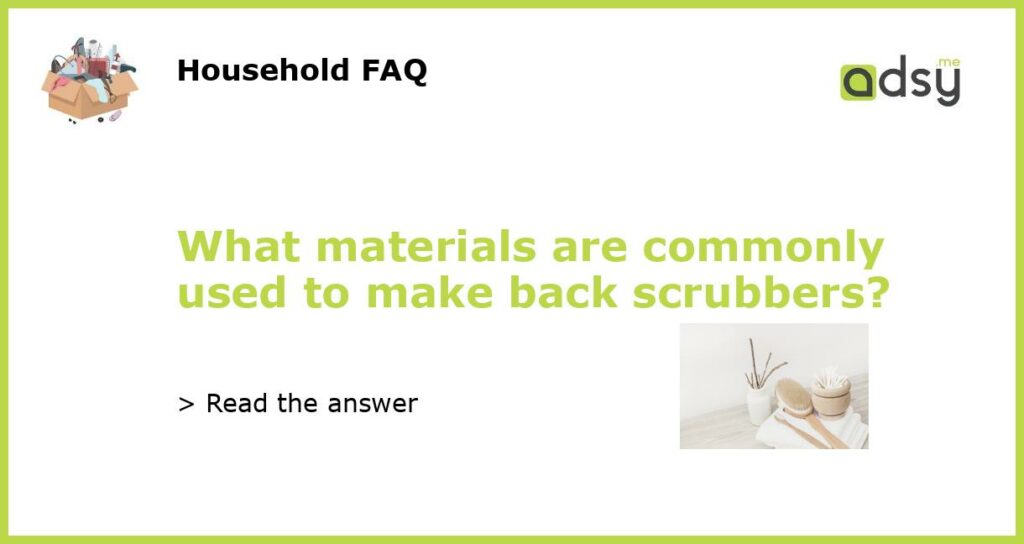Understanding the Importance of Back Scrubbers
Back scrubbers are essential tools for maintaining good hygiene and health, especially in hard-to-reach areas of the body. Regularly using a back scrubber can help exfoliate the skin, increase blood circulation, and prevent dead skin cells from clogging pores. However, with many options in the market, it can be challenging to know which materials are suitable for making back scrubbers. This article discusses some of the commonly used materials to make back scrubbers.
Natural Loofahs
One of the most common materials used to make back scrubbers is natural loofahs. Loofahs are the dried, fibrous internal structure of the fruit of the Luffa plant. They are a sustainable option because they grow easily in warm climates and are biodegradable. Loofahs are known for their rough texture, making them ideal for scrubbing away dead skin cells and impurities. However, they may not be suitable for people with sensitive skin as they can be quite abrasive.
Sustainable Sisal
Sisal is another natural material used to make back scrubbers. It is a type of agave plant that grows in arid regions, and its fibers are tough and durable. Similar to loofahs, sisal back scrubbers have a rough texture that can remove dead skin cells effectively. Additionally, they are biodegradable and can withstand moisture, making them ideal for use in the shower or bath. However, people with sensitive skin may find sisal too harsh on their skin.
Environmentally Friendly Bamboo
An environmentally friendly option for making back scrubbers is bamboo. Bamboo is a renewable and fast-growing plant that requires minimal water and pesticides to grow. Its fibers are soft yet effective in scrubbing the skin. Moreover, bamboo is naturally antibacterial, making it an ideal material for a hygiene tool like a back scrubber. However, bamboo back scrubbers are less abrasive than loofahs and sisal, so they may not be suitable for people with tough skin or those looking for a deep exfoliation.
Synthetic Materials
Aside from natural materials, synthetic materials like nylon, polyester, and polypropylene are also used to make back scrubbers. These materials are readily available and cheap, making them an affordable option for mass-produced back scrubbers. However, synthetic back scrubbers may not be biodegradable and can accumulate bacteria over time. Moreover, they may not be as effective in scrubbing away dead skin cells as natural materials like loofahs, sisal, or bamboo.
Choosing the Right Back Scrubber Material
Ultimately, the material you choose for your back scrubber depends on your preferences and skin type. If you have sensitive skin, natural materials like bamboo or synthetic materials like microfiber may be more suitable. If you are looking for a deep exfoliation, natural materials like loofahs or sisal may be more effective. Remember to clean and replace your back scrubber regularly to prevent the growth of bacteria and maintain hygiene.






